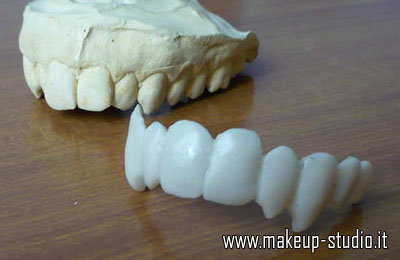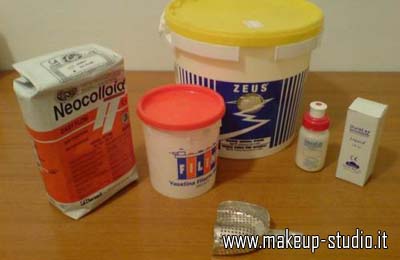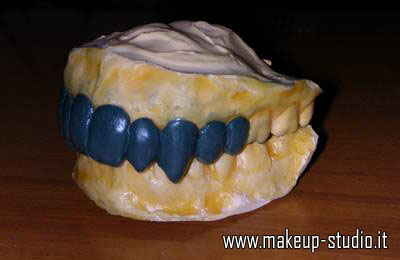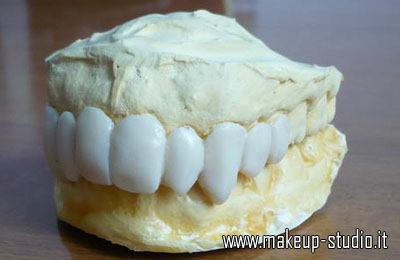Day: DIY
How to create a fake nose for theatrical use latex
by Stefano on Oct.12, 2011, during Special Effects, Events
Here are step by step illustrated instructions on how I made the noses for a few characters of the Palio of Pomarance.
Since this is a play which did not require the likely make-up make-up film, and being the nose part of the face little flexible and deformable, I thought it was not necessary to use latex foam to achieve this type of prosthesis, but could also work well on liquid latex precured.
The first step in the realization of the prosthesis was then the study design (the whole show was created and developed around a comic) and the creation of the model.
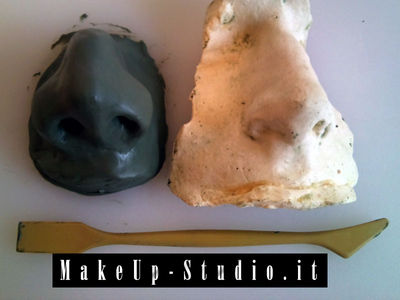 |
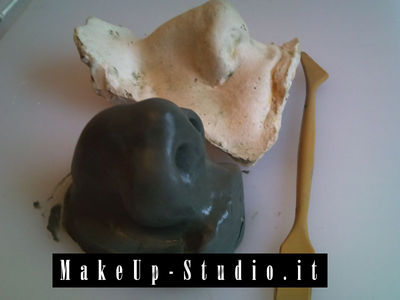 |
Even with the positive provision of a nose (my! 🙂 ) plaster work on, and that I used as reference for the size, for convenience I made a table of all PVC (my kitchen cutting board).
After the modeling phase of the clay (Here I used the very common Pongo) and recreated a thin orange peel to simulate the effect of the skin, I used the cutout of the base of a bottle to surround the model and create a containment for the casting, as well suited in size, and then I poured the plaster to get the impression.
At this stage it is important to ensure that small air bubbles inevitably present in the water / gypsum leave, thus avoiding that create imperfections to the mold. To do this, fully paid after the plaster into the mold, just beat vigorously on the basis of which it supported the model, creating vibrations.
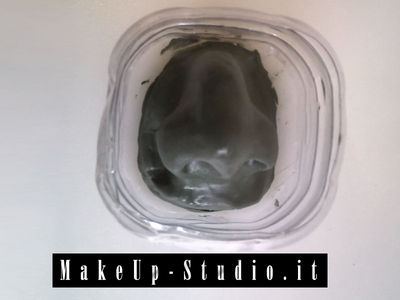 |
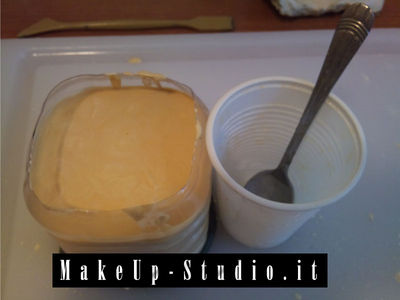 |
Obtained the mold and removing the model pose, which will leave the imprint 'clean', you can proceed to the first molding.
To do this you must pay a minimum amount of liquid latex mold inside, and then moving the same to make the latex go to cover only the areas concerned, preventing or oozing from the mold is at the bottom.
The mold should be left to air dry (if you want you can speed up the processs with a hair dryer) and at the end all be exposed to the latex powdered with talcum powder or neutral boron-. This will prevent the latex from sticking to itself during the extraction.
Generally a single layer of latex is very thin and is not sufficient to ensure that the prosthesis has achieved the required consistency, to make it more rigid, you can create other levels following the first, but left margins after 'climbing’ the distance 1/2 mm from the edge of the previously created, to ensure that the edges, remaining thinner, risultimo invisible once pasted.
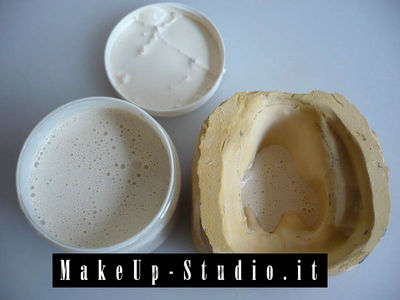 |
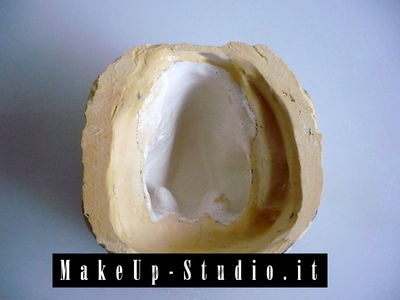 |
Once you reach the desired thickness, powder for remembering everything well, you can proceed, by lifting a corner of the latex and shoved under a brush full of talcum powder, to pull the nose of the mold.
What should be done by becoming aware that the objectivity achieved not fold on itself, sticking beyond repair.
Below is presented as a separate noses from the plaster, ready to be applied and colored.
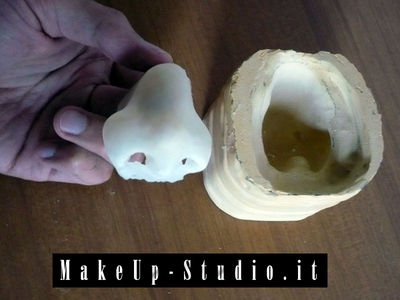 |
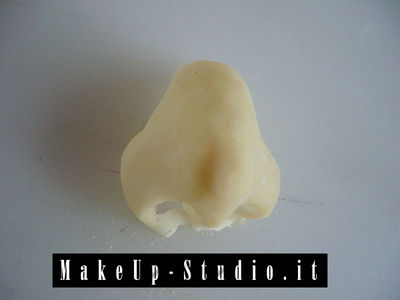 |
How to make vampire teeth
by Stefano on Mar.11, 2010, during Special Effects
Here is the backstage for the construction of a denture (it is actually a crown) realism of undisputed, highly effective in making short films, live events, cosplay or just for a change’ their look depending on the mode.
L’ need is available in all stores for dentists or dental, possibly also at a good price online.
Materials needed:
- An impression tray top of the desired size
- Alginate per imprint, slow.
- Gypsum powder.
- Disposable latex gloves.
- Dough or put.
- Vaseline.
- Resin for provisional.
- Pre-vulcanized liquid latex
- Bototalco
- Silicone Impression (it only takes a small amount)
- any water-based acrylic colors
The first step is to take an impression of the teeth. This is done using the special tray and a fair mixture of water and alginate (I use Neocolloid, which is also excellent for making the cast of the face or any part of the body).
Once the slurry has been stabilized and hardened (by 3 to 5 minutes) you can clean the mouth and fill with a mixture of water and gypsum. Council to do this in two stages: the first with a very liquid mixture that is stratified throughout the footprint, It need operation during which tap the table, is to remove small air bubbles present, that in order to enable the plaster to make every detail present on the mold.
The second, every few minutes from the first, a little more dense, as a filler.
After a period ranging from 20 minutes 2 hours, depending on the plaster you have chosen, Your positive is ready.
If you have a latex liquid, I recommend using it to coat the stamp with a light film, Dab with talcum powder: This will make it much easier to loose the prosthesis as well as give a slight 'game’ made to the crown, that make it more comfortable and durable.
On the positive thus created and covered by a layer of latex, it is now possible to model your new teeth with the plasticine or clay.
After work cover everything with a thin layer of vaseline, that, as well as allow the posting of the counter that we will achieve, is also useful to give a good polish to the whole tooth.
The prototype so grossed must be placed in the freezer for a couple of hours, so that the plasticine or clay to take a good consistency.
After such an interval may be made to make the mold with key (that is, with a detail, such as a small pin located on the palate) allowing for the repositioning of the same counter.
To accomplish the latter you can use different types of materials, but I have experimentally verified that the best is the silicone impression (Flexitime EasyPutty), that breaks away from the plaster once catalyzed, is flexible and allows slight undercuts, separating the resin and is reusable !
Wait until the counter that you cast or molded on the model is hard, and disconnect it from your work again. Make sure that the work done so far has managed well and remove the dough from the positive (and if present in trace, also from the negative).
Now comes the most delicate moment, the realization of the real prosthesis molding.
Given the nature of the used substances near, I suggest you work in a well ventilated place and using latex gloves.
Liquid and powder (I used a medium color Duralay clear) be blended in appropriate quantities (about 1:1) and then poured into the mold, closed immediately with good positioning with the key you created earlier. Obviously a soft mold will make it much easier being removed.
After a variable time between half an hour and 2 hours depending on the resin used can be removed to cut the crown, remove small imperfections, lucidarla, and colored end.
In some of the attached pictures you can see how he left a large area of coverage on the gums. This is not always necessary, rather, often the most realistic prosthesis cover only the teeth. A skilful use of color and a couple of coats of clear gloss will give your life to finally sighed work.
 |
 |
 |
Plaster cast |
Model in clay |
Controstampo in silicone |
 |
 |
 |
Prosthetics printed |
Finished prosthesis |
Prosthetics colored |
